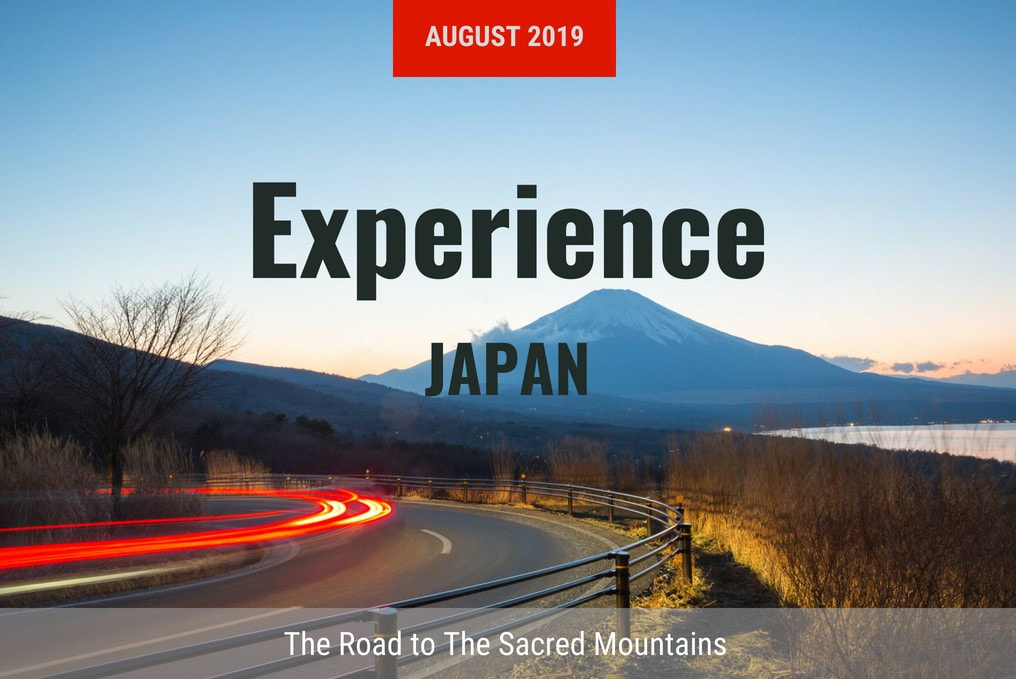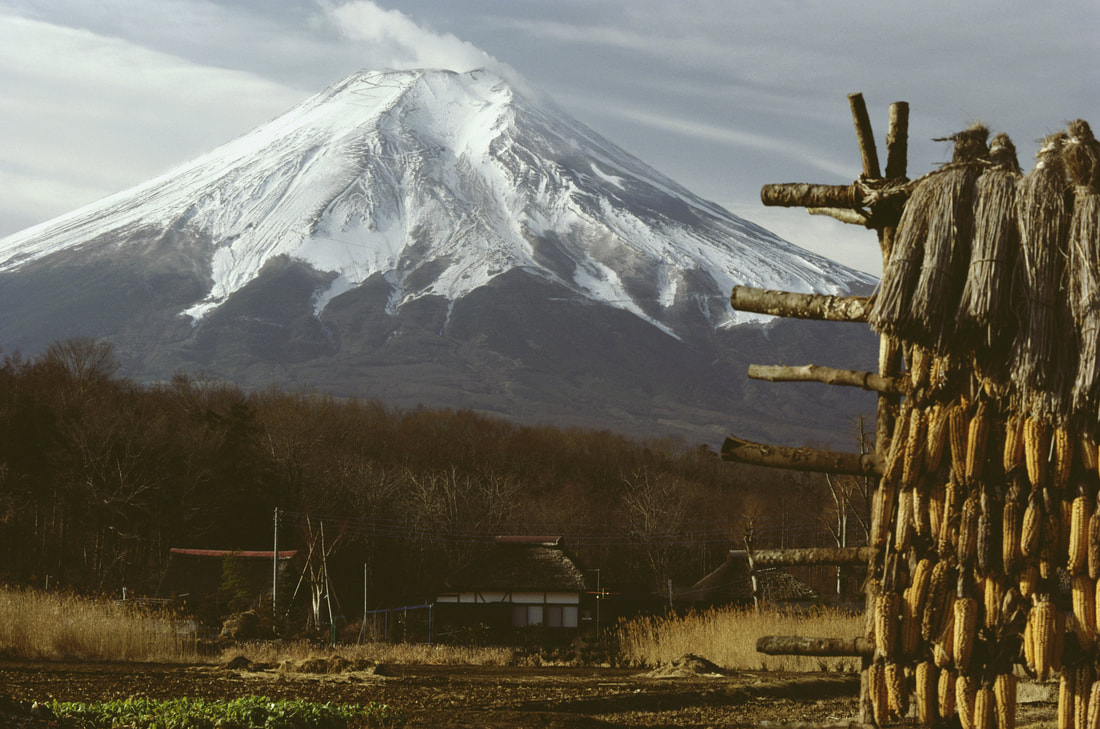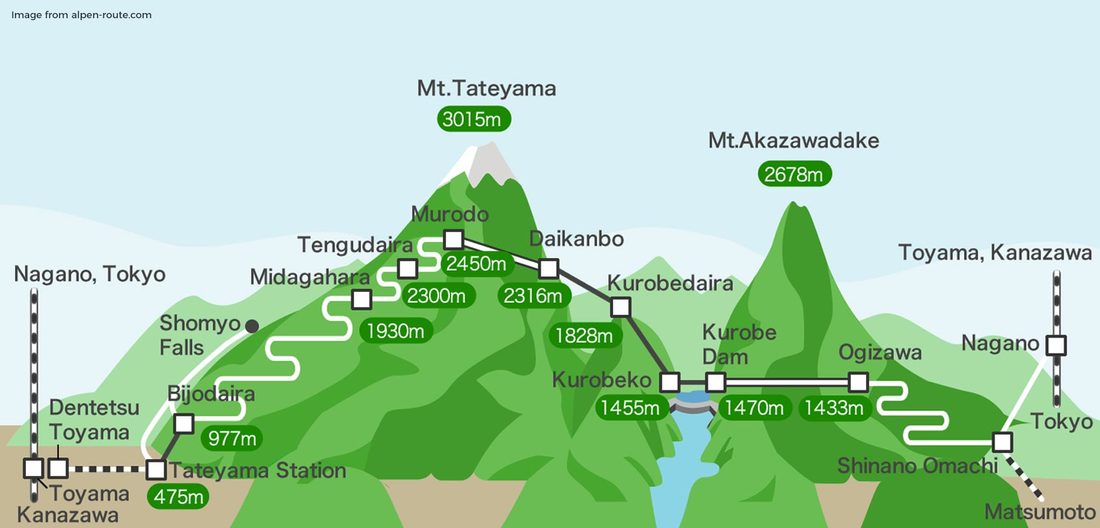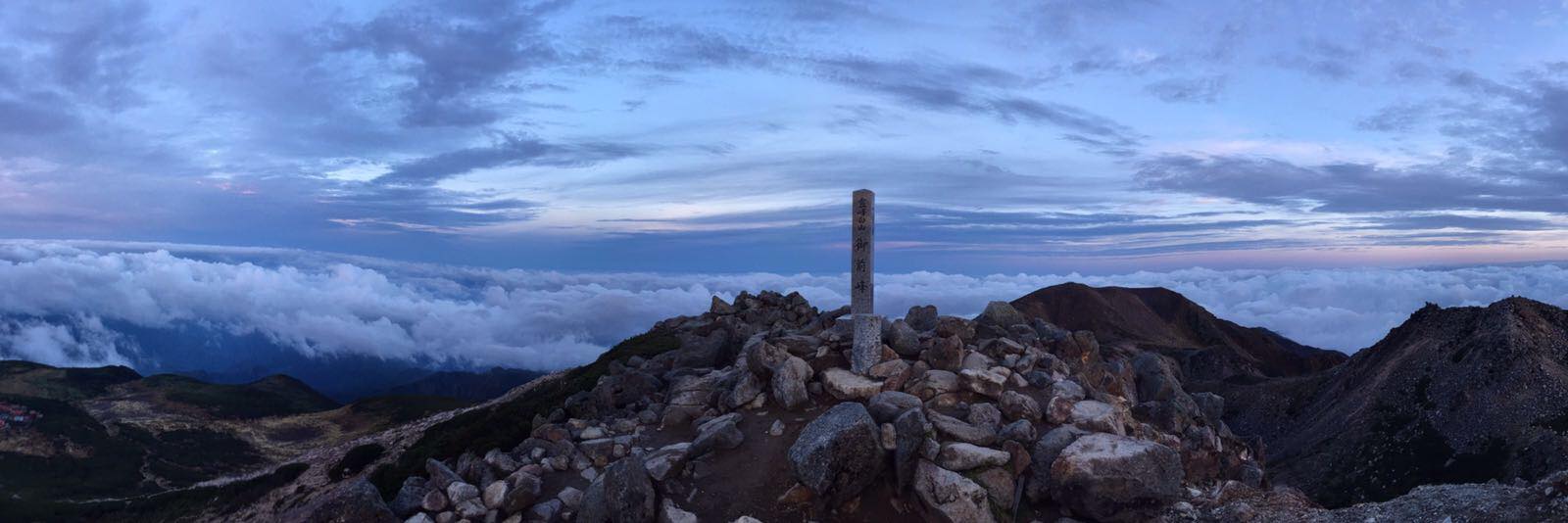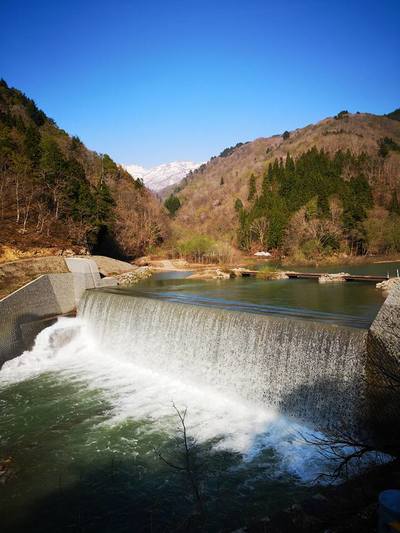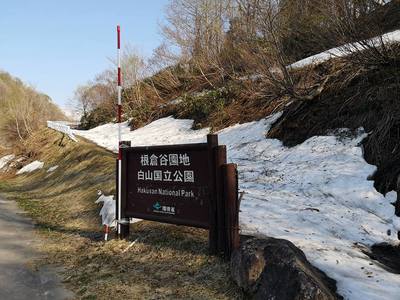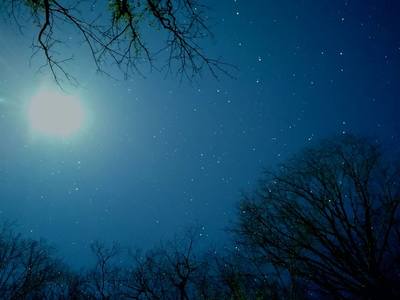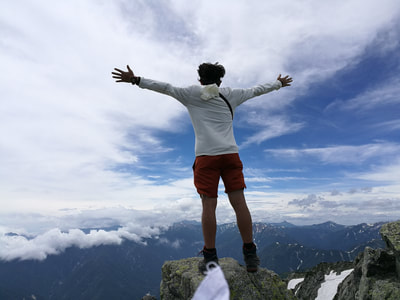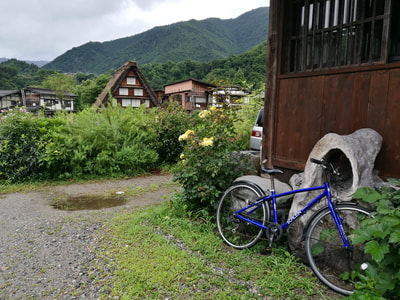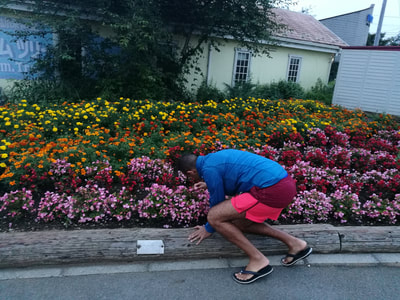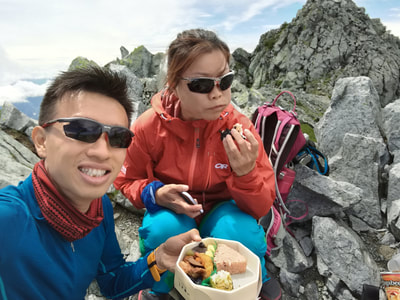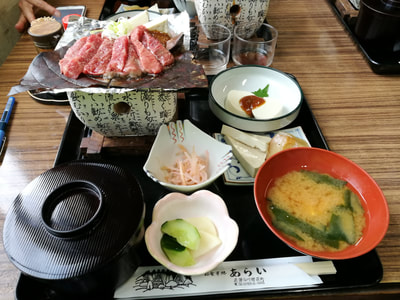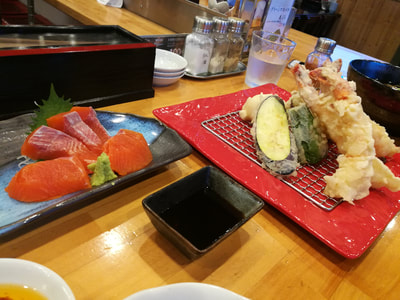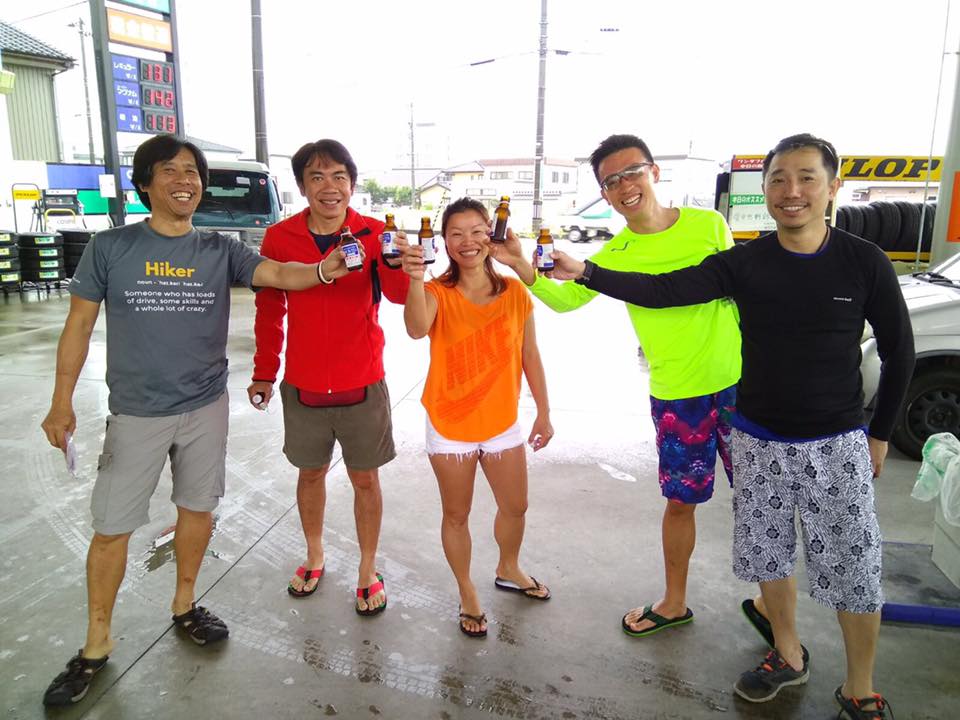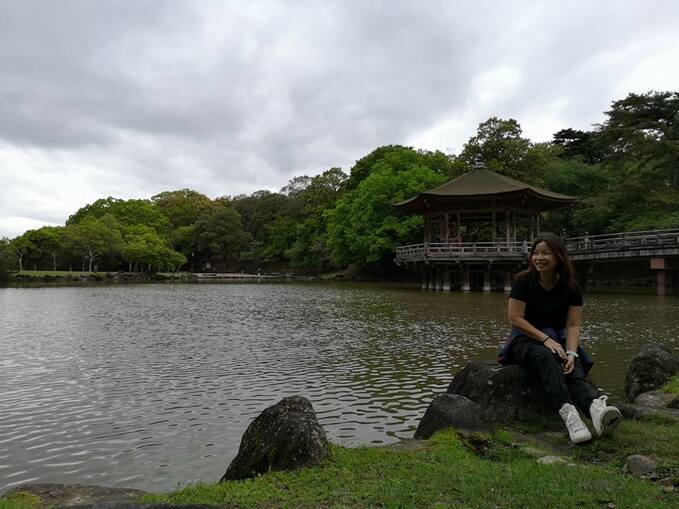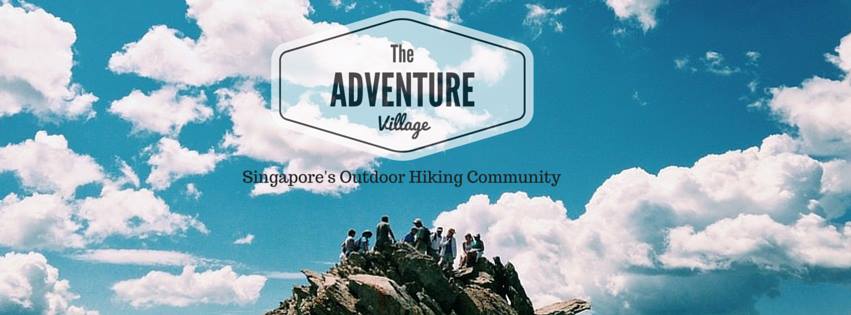The great outdoor of Japan is no stranger to world. Nearly 70% of its land are covered by mountains and lush green forests. It is through these mountains and nature that since ancient time, the Japanese draws their source of inspiration, dream and spiritual strength.
Three of the mountains in particular are known as Sanreizan (三霊山) or the Three Holy Mountains. Each believed to possess specific spiritual force which flows through the mountains and their rivers, from the peaks to the foothills, giving life to the land.
In this journey we will take to the road to experience the scenic journey through the different parts of Japan related to the three mountains and in a humble attempt to summit all three within 10 days. Discover the the diverse culture and display of arts and spirituality relating to their proximity to each mountains, it might be mystical, weird or even funny but surely it would be an experience not to miss.
Starts your journey at the Capital of Japan Tokyo and end it at Osaka, Japan's third-largest city where things have always moved a bit faster, where people are a bit brasher and interactions are peppered with playful jabs.
Check out our video from last year adventures in Japan here
Mount Fuji
Mount Fuji (Fuji-san) is the most prominent of the three and considered the holliest. More famously known as the the highest mountain in Japan, it rises to a height of 12,388 feet (3776.34masl) and on a clear day can be seen from Tokyo. This beautiful cone-shaped mountain is surrounded by lakes in a national park.
The mountain is likely named after the the Ainu Fire Goddess Fuchi and located at the summit is a shrine of Shinto Goddess Sengen-Sama. Its isolation and the perfection of the shape of its cone has made it a celebrated subject of poetry and art. Every summer, thousands of visitors, pilgrims and tourist alike visited Fujiyama, many of them hiking throughout the night to witness the sunrise from the summit.
We will start our journey with a bang on this majestic mountain....
Mount Fuji (Fuji-san) is the most prominent of the three and considered the holliest. More famously known as the the highest mountain in Japan, it rises to a height of 12,388 feet (3776.34masl) and on a clear day can be seen from Tokyo. This beautiful cone-shaped mountain is surrounded by lakes in a national park.
The mountain is likely named after the the Ainu Fire Goddess Fuchi and located at the summit is a shrine of Shinto Goddess Sengen-Sama. Its isolation and the perfection of the shape of its cone has made it a celebrated subject of poetry and art. Every summer, thousands of visitors, pilgrims and tourist alike visited Fujiyama, many of them hiking throughout the night to witness the sunrise from the summit.
We will start our journey with a bang on this majestic mountain....
Tateyama
Tateyama also known as Japanese Northern Alps are one of the most scenic region in the country. Breath taking Snow capped mountains surrounds the region crossing over two prefecture Nagano and Toyama.
As with other holy mountains, Tateyama is believed to be a residence of a god and it gained prominence is 17th to 19th Centuries where it became one of the Japan’s three holy mountains. There are many legends surrounding the mountains due to its unique volcanic landscape including “Jigokudani” aka the “Hell Valley” and “Chinoike” aka the “Blood Pond”.
People seeing hot water coming from the ground at Jigokudani imagined that they were seeing into the underworld. Thus the high point of Mt. Tateyama overlooking the valley of hell came to represent heaven and the people who climbed Mt. Tateyama during their life hoped that their souls would go to heaven after their death.
We will cover the Tateyama region from both the East (up to Kurobe Dam) and West side (up to Murodo) via the spectacular Kurobe Alpine Route (立山黒部アルペンルート)
Tateyama also known as Japanese Northern Alps are one of the most scenic region in the country. Breath taking Snow capped mountains surrounds the region crossing over two prefecture Nagano and Toyama.
As with other holy mountains, Tateyama is believed to be a residence of a god and it gained prominence is 17th to 19th Centuries where it became one of the Japan’s three holy mountains. There are many legends surrounding the mountains due to its unique volcanic landscape including “Jigokudani” aka the “Hell Valley” and “Chinoike” aka the “Blood Pond”.
People seeing hot water coming from the ground at Jigokudani imagined that they were seeing into the underworld. Thus the high point of Mt. Tateyama overlooking the valley of hell came to represent heaven and the people who climbed Mt. Tateyama during their life hoped that their souls would go to heaven after their death.
We will cover the Tateyama region from both the East (up to Kurobe Dam) and West side (up to Murodo) via the spectacular Kurobe Alpine Route (立山黒部アルペンルート)
Mount Haku
HAKUSAN 白山 (lit. white mountain) is the collective name for a number of sacred Japanese mountains that converge along the borders of four prefectures; Ishigawa, Fukui, Gifu, and Toyama. The Hakusan Shirayama Hime-Jinja Oku-miya (Shrine), is located at the highest peak of Mt. Hakusan at 2702masl.
The origin of mountain-climbing worship is said to date back to 717, when a priest named Taicho climbed Mt. Hakusan for the first time to practice aesthetic rites and has since then attracted many worshipers. Hakusan national park is well known spot for skiing and snowboarding and the trails maintains a plethora of flora and fauna due to minimal human contact including the Ishikawa’s golden eagle and Toyama’s thunder bird (Raicho).
There is nothing better than to end our humble journey on Mt Haku, where we aim to celebrate Singapore National day (9 of August) and fly the flag high at the summit during sunset....
HAKUSAN 白山 (lit. white mountain) is the collective name for a number of sacred Japanese mountains that converge along the borders of four prefectures; Ishigawa, Fukui, Gifu, and Toyama. The Hakusan Shirayama Hime-Jinja Oku-miya (Shrine), is located at the highest peak of Mt. Hakusan at 2702masl.
The origin of mountain-climbing worship is said to date back to 717, when a priest named Taicho climbed Mt. Hakusan for the first time to practice aesthetic rites and has since then attracted many worshipers. Hakusan national park is well known spot for skiing and snowboarding and the trails maintains a plethora of flora and fauna due to minimal human contact including the Ishikawa’s golden eagle and Toyama’s thunder bird (Raicho).
There is nothing better than to end our humble journey on Mt Haku, where we aim to celebrate Singapore National day (9 of August) and fly the flag high at the summit during sunset....
THE ITINERARY (2019)
Day 1- 03 August
Arrival in Tokyo
Journey to Kawaguchiko
Overnight at accommodation near Kawaguchiko Lake
Day 2- 04 August (B)
Morning Free and Easy;
Site of interest to explore Oishi Park/Herbal Hall/ Musical Forest, Cat Museum and Maple Corridor
Check out late afternoon and depart to MT Fuji Subaru 5th station in the evening to start hike
Day 3- 05 August (D)
Sunrise viewing at Mt Fuji Summit ~5am
Estimated descend by 10 AM
Journey to Tateyama, overnight at Omachi
Day 4- 06 August
Spend a resting day at Japan’s Tallest Kurobe Dam.
Journey to Tateyama West Side and overnight at Kurobe
Day 5- 07 August (B/D)
Tateyama hike day, spend a full day to hike the various peaks of Tateyama and explore the unique landscapes attraction around Tateyama’s Murodo stations
Post hike, journey to Hakusan for overnight.
Day 6- 08 August (B/D)
Rest Day, explore Hakusan National park including the famous UNESCO Shirakawa-Go or spend a day shopping at the bustling Kanazawa city.
Get ready for the Mount Haku hike. Overnight at the same hotel
Day 7- 09 August (B/D)
Check out after breakfast, head to trailhead for Hakusan Hike.
We will spend a night at the mountain accommodation at Murodo near the summit. Chance to get sunset view.
Day 8- 10 August (B)
Sunrise hike @4am. Return for breakfast and start descend afterward
Post hike, journey to Mattou town and overnight
Day 9- 11 August(B)
Free and Easy morning
Upon checkout, journey to OSAKA
Overnight hotel
Day 10- 12 August (B)
Depart back to Singapore at own timing
Arrival in Tokyo
Journey to Kawaguchiko
Overnight at accommodation near Kawaguchiko Lake
Day 2- 04 August (B)
Morning Free and Easy;
Site of interest to explore Oishi Park/Herbal Hall/ Musical Forest, Cat Museum and Maple Corridor
Check out late afternoon and depart to MT Fuji Subaru 5th station in the evening to start hike
Day 3- 05 August (D)
Sunrise viewing at Mt Fuji Summit ~5am
Estimated descend by 10 AM
Journey to Tateyama, overnight at Omachi
Day 4- 06 August
Spend a resting day at Japan’s Tallest Kurobe Dam.
Journey to Tateyama West Side and overnight at Kurobe
Day 5- 07 August (B/D)
Tateyama hike day, spend a full day to hike the various peaks of Tateyama and explore the unique landscapes attraction around Tateyama’s Murodo stations
Post hike, journey to Hakusan for overnight.
Day 6- 08 August (B/D)
Rest Day, explore Hakusan National park including the famous UNESCO Shirakawa-Go or spend a day shopping at the bustling Kanazawa city.
Get ready for the Mount Haku hike. Overnight at the same hotel
Day 7- 09 August (B/D)
Check out after breakfast, head to trailhead for Hakusan Hike.
We will spend a night at the mountain accommodation at Murodo near the summit. Chance to get sunset view.
Day 8- 10 August (B)
Sunrise hike @4am. Return for breakfast and start descend afterward
Post hike, journey to Mattou town and overnight
Day 9- 11 August(B)
Free and Easy morning
Upon checkout, journey to OSAKA
Overnight hotel
Day 10- 12 August (B)
Depart back to Singapore at own timing
LAND COST
Early Bird cost of SGD3600/pax if you paid deposit and confirm your spot by 30 November 2018 , after which it is SGD3800/pax
Min 10 Pax (Max 14) to confirm the trip
Registration and Payment Details:
Step 1- Deposit of $1000 via ATM/Bank transfer to ADVENTURES UNLIMITED, DBS CURRENT A/C - 0039351950
Step 2: Whatapp proof of payment receipt to Jane +65 9102 0550 (IMPORTANT: PLEASE INDICATE "JAPAN AUG 2019).
Step 3 Receipt for payment will be issued and you will be added into a dedicated whatsapp chat for this trip three months prior to the trip.
Inclusions and Exclusions
Cost Includes
All the ground transportation from day 1 to day 09 including rental of car /road toll/parking fee/fuel charges
National park transport system such as shuttle bus/ mountain tram or train (for sections where car are not allowed)
8 nights shared accommodation in hotel or ryokan
Meals as indicated in the itinerary
Entrance fees for Mount Fuji/ Tateyama/ Mount Haku
All necessary paper works and national park entry permits.
Logistic and on the ground support from Adventures Unlimited trip leaders
Cost doesn't include
International Flight tickets
Travel insurance
Personal equipment
Visa fee (if applicable)
Personal shopping and laundry, shower etc.
Refund Policy
Deposit (non-refundable)
Until 12 weeks prior to departure – 100% Refund of balance paid
10 weeks prior to departure – 50% Refund of balance paid
8 weeks prior to departure – 0% Refund of balance paid
Training
Participants are expected to commit to dedicated training programmes jointly conducted by Adventures Unlimited and /or The Fitness League.
Others:
1. This event is organised by Adventures Unlimited (TA02844), a licensed travel agent registered with the Singapore Tourism Board.
2. Insurance
From 15 July 2015, a travel agent is required to inform and ask attending participants if it is their wish to purchase travel insurance that includes coverage for business insolvency of travel agencies when:
– they are buying a leisure travel product/package; or
– their travel product/package costs at least S$1,000 (including GST) per person; or
– they are paying a deposit or payment of at least S$500 per person.
Early Bird cost of SGD3600/pax if you paid deposit and confirm your spot by 30 November 2018 , after which it is SGD3800/pax
Min 10 Pax (Max 14) to confirm the trip
Registration and Payment Details:
Step 1- Deposit of $1000 via ATM/Bank transfer to ADVENTURES UNLIMITED, DBS CURRENT A/C - 0039351950
Step 2: Whatapp proof of payment receipt to Jane +65 9102 0550 (IMPORTANT: PLEASE INDICATE "JAPAN AUG 2019).
Step 3 Receipt for payment will be issued and you will be added into a dedicated whatsapp chat for this trip three months prior to the trip.
Inclusions and Exclusions
Cost Includes
All the ground transportation from day 1 to day 09 including rental of car /road toll/parking fee/fuel charges
National park transport system such as shuttle bus/ mountain tram or train (for sections where car are not allowed)
8 nights shared accommodation in hotel or ryokan
Meals as indicated in the itinerary
Entrance fees for Mount Fuji/ Tateyama/ Mount Haku
All necessary paper works and national park entry permits.
Logistic and on the ground support from Adventures Unlimited trip leaders
Cost doesn't include
International Flight tickets
Travel insurance
Personal equipment
Visa fee (if applicable)
Personal shopping and laundry, shower etc.
Refund Policy
Deposit (non-refundable)
Until 12 weeks prior to departure – 100% Refund of balance paid
10 weeks prior to departure – 50% Refund of balance paid
8 weeks prior to departure – 0% Refund of balance paid
Training
Participants are expected to commit to dedicated training programmes jointly conducted by Adventures Unlimited and /or The Fitness League.
Others:
1. This event is organised by Adventures Unlimited (TA02844), a licensed travel agent registered with the Singapore Tourism Board.
2. Insurance
From 15 July 2015, a travel agent is required to inform and ask attending participants if it is their wish to purchase travel insurance that includes coverage for business insolvency of travel agencies when:
– they are buying a leisure travel product/package; or
– their travel product/package costs at least S$1,000 (including GST) per person; or
– they are paying a deposit or payment of at least S$500 per person.
We are looking for four experienced drivers to join us for this road trip. There will be incentives given
Please contact either host to find out more details
Please contact either host to find out more details

